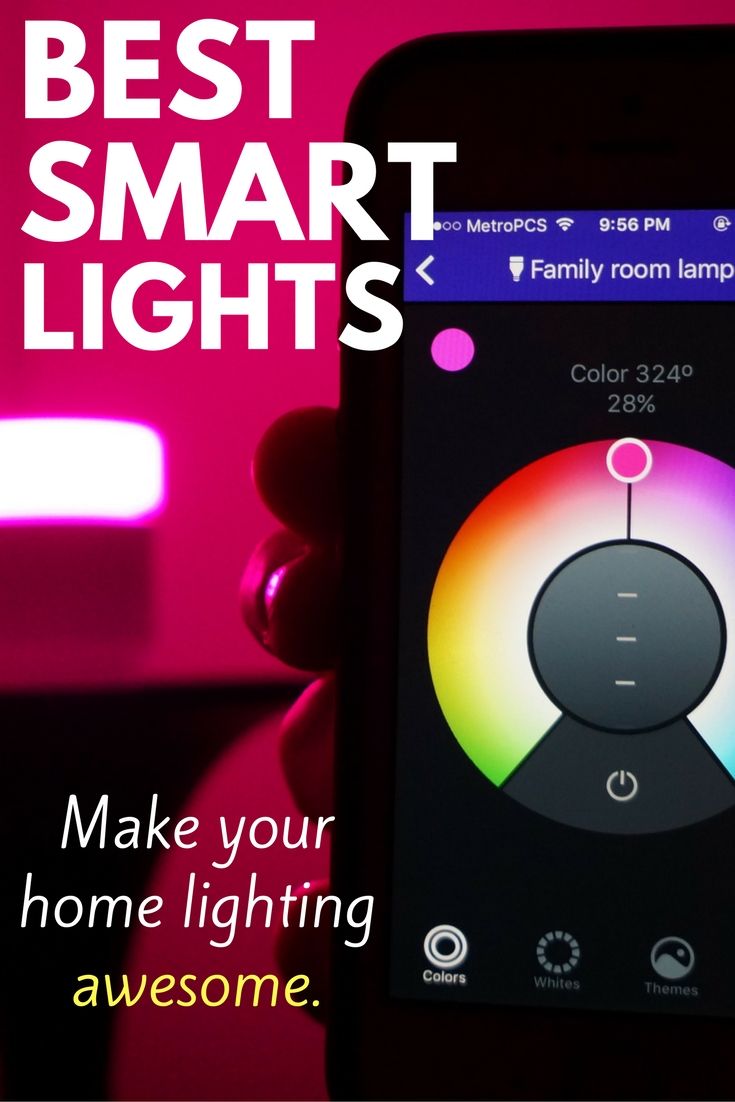Best Smart Lights 2026 Comparison
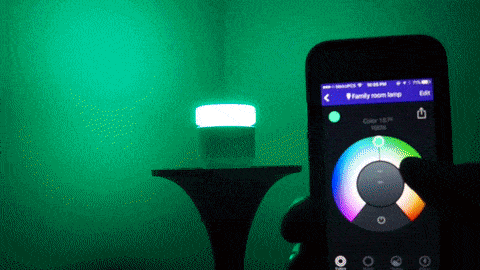

Affiliate Disclosure: This page contains affiliate links, which earn us commission from Amazon at no cost to you.
"Alexa, turn on the lights." This phrase is part of my everyday life. Smart lights are no longer a gimmick— they are actually very useful. But what are the best smart lights for you to choose from? We’ve saved you the work by creating this comparison of very best smart lights in 2026. Because smart lights should be...smart.
Jump to:
Best Smart Light Bulbs 2026
Disclosure: All reviews and prices on this page are from Amazon.com. We use the Amazon API to display prices and reviews.
| Price | Compatibility | Pros | Cons | |
|---|---|---|---|---|
|
{{product.name}} |
{{product.price}} |
|
|
Our Pick: LIFX Color 1000
Our recommended best smart light bulbs are LIFX. Its colors are brighter, lifespan is longer, and it has higher lumens. Mostly, I appreciate that it doesn’t require a separate hub. Instead of committing to the Philips Hue brand, you can buy a few LIFX bulbs and connect them to a SmartThings or Wink hub for more control. The LIFX Color 1000 has tunable whites and more than 16 million colors. We compare LIFX vs LIFX Plus vs LIFX Mini to help you find the best option for your home.
Philips Hue is a very close second. It's highly compatible with other devices and is great if you are wanting to start out with a kit that has several bulbs. There are also more lamps and specialty lights under the Hue brand that work within its app. Both LIFX and Hue are great bulbs and connect to Alexa, SmartThings, and other devices, allowing you to automate your lights based on your habits. For example, when your favorite sports team scores, you can make the lights flicker, or if it starts raining outside, you can have the lights turn blue. See our full comparison of LIFX vs Hue for more details.
If you don’t care about automation, Flux and other bulbs listed above are a great, inexpensive option.
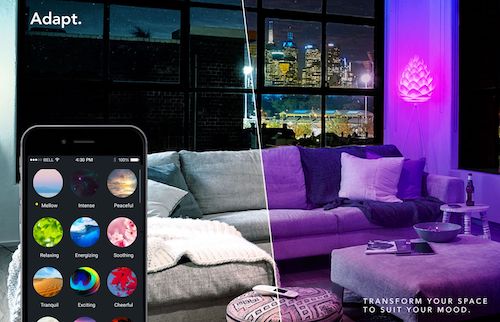
Best Smart Light Strips 2026
| Price | Compatibility | Pros | Cons | |
|---|---|---|---|---|
|
{{product.name}} |
{{product.price}} |
|
|
Our Pick: LIFX Z
We wrote a full comparison of several of these light strips for more details, and also covered these in a hands-on review video. Each has its pros and cons as far as pricing and compatibility, but LIFX Z ranks for the best smart lights in 2026. It is the only one with color zones, allowing for a rainbow of unique colors across one strip. It also adds 700 lumens of brightness with each extension kit, allowing you to add brightness as it’s extended. However, if you already own Philips Hue or Lightify bulbs, then I would stick with the brand you have.
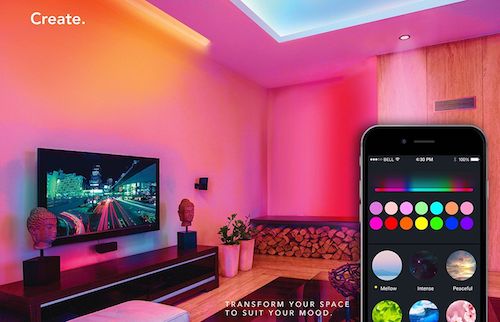
Best Smart Light Switches 2026
| Price | Compatibility | Pros | Cons | |
|---|---|---|---|---|
|
{{product.name}} |
{{product.price}} |
|
|
Our Pick: TP-Link
WeMo, TP-Link, and Lutron are all very good light switches, but it all comes down to your preferences. Wanting a switch that works with everything? Get a WeMo. Looking for a cheap switch that doesn’t need a hub? TP-Link is great. Wanting a smart dimmer? Get the Lutron Caseta. We recommend the TP-Link since it works with Alexa, but again, it really comes down to your own smart home.
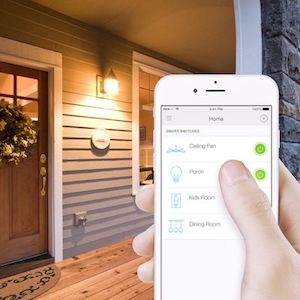
Common Questions
Do I want a hub?
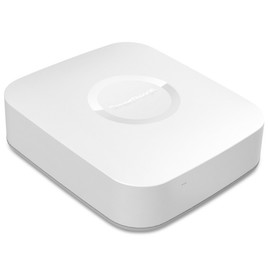
A hub, gateway, or bridge is a device that plugs into your router to control your smart lights. It’s an added expense, but it does help different smart home devices communicate with one another. While some lights require a hub, others work on their own.
We recommend buying gadgets that are compatible with third-party hubs that can help your smart home grow in the future. For example, GE Link works with the Wink Hub, while LIFX is compatible with SmartThings. Wink and SmartThings are two of the most well-known hubs, with very strong compatibility to help your smart lights communicate with most devices around the house.
There are plenty of very good smart lights without hubs that have impressive features, if you want to avoid buying a hub altogether.
Why does color temperature matter?
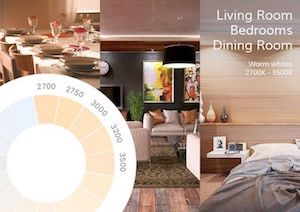
Color temperature determines the warmth or coolness of your lights. Warm whites (2700K to 3500K) have a more yellow tone and are fitting for the living room or bedroom. Cool whites (3500K to 6500K) appear to have more of a blue tint and are energizing, making them perfect for kitchens and offices.
Color temperature means the difference between guests feeling comfortable and relaxed, or feeling on edge and tired. Tunable bulbs have a range of color temperatures. That means you can move the bulb to a different room and just change its temperature to fit the mood, or even just change the temperature based on the time of day. Those with a set temperature will not change appearance, so you can’t rotate between warm and cool whites.
Why don’t I see more smart lights on here?
There are many smart light bulbs and devices on Amazon. We included only the ones with the highest reviews and the strongest brand names for our list of best smart lights for 2026. Some brands close their doors after only a few years, leaving you with expensive “dumb” bulbs. While we can’t guarantee any of the devices listed above, these have the best chance of keeping their doors open and your smart home functioning.
When shopping for our first smart light bulb, the ones we bought were good, but not great. The app frequently crashed and the bulbs weren’t multicolor. Sorting through the mess of bulbs was difficult and we really needed a smart lights comparison like this one to get much better smart light bulbs for the same price. You'll notice all of these have strong Amazon reviews - that's because we don't waste your time listing products with poor ratings.
What kind of integration should I look for?
You can easily schedule your smart light bulbs. Have them slowly get brighter everyday to wake you up gently. Many of them are multicolored, allowing you to change the look for holidays or your favorite sports teams.
The smart light 'magic' really starts when you integrate your bulbs with other smart home devices. Use IFTTT (If This, Then That) to connect your smart home using simple rules. When your security cameras sense motion on the front porch, have the lights blink. Or have Siri turn on your bedtime scene, which turns up the thermostat, locks the door, and shuts off all lights. The possibilities are endless. Take a look at some of our favorite Hue ideas to get you started.
Are these secure?
There are plenty of insecure smart devices out there with vulnerabilities. While smart home gadgets have been in the news for hacking attacks, many of them were low-quality DVRs and security cameras. These came with pre-set, generic usernames and passwords, practically begging to be hacked. The best way to secure your smart home products is with a strong password. Make sure it is unique from the other passwords you use. Don’t buy devices without strong security, or those that come with usernames and passwords already setup.
Some people avoid smart home technology completely due to security concerns. But do you own a printer? Or a smart phone? What about a smart TV? Internet-connected devices are becoming unavoidable. The key is to secure them properly and use them with caution.
Are smart lights worth it?
Yes, they are worth it. They are a fun, low-budget start to building a smart home. They add convenience with easy scheduling options. They make your home more secure by giving the appearance that you are in town even when you are away. And they have a very long lifespan, with many lasting longer than 20 years. Since they are much more expensive than the standard light bulb, many people just purchase one or two as accents for their smart home.
